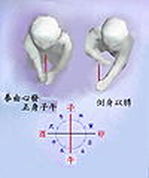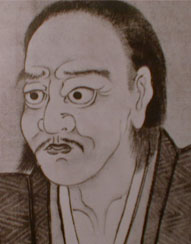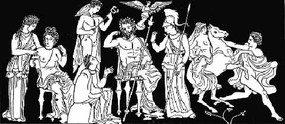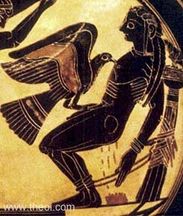Tai Ji Quan is considered to be one of the internal styles of Chinese martial art, and is the most widely practiced martial art in the world today. The term "Tai Ji" refers to the ancient Chinese cosmological concept of the interplay between two opposite yet complementary forces (Yin and Yang) as being the foundation of creation. "Quan" literally means, "fist" and denotes an unarmed method of combat. Tai Ji Quan as a martial art is based on the principle of the soft overcoming the hard.
The origins of Tai Ji Quan are often attributed to one Zhang San Feng (a Daoist of either the Twelfth or Fifteenth century depending on the source) who created the Art after witnessing a fight between a snake and a crane. Although there is evidence that Zhang San Feng actually existed, there is no historical evidence to support the claim that he had anything to do with the creation or practice of Tai Ji Quan. These stories were popularized in the early part of this century and were the result of misinformation and the desire to connect the Art with a more famous and ancient personage. All of the various styles of Tai Ji Quan which are in existence today can be traced back to a single man, Chen Wang Ting, a general of the latter years of the Ming Dynasty. Chen was a native of Chen Jia Gou, Wen County, in Henan Province. After the fall of the Ming and the establishment of the Ching Dynasty (1644), Chen Wang Ting returned to the Chen village and created his forms of boxing. Originally containing up to seven sets, only two sets of Chen Style Tai Ji Quan have survived to the present.
Originally, the Art was only taught let members of the Chen clan until a promising young outsider
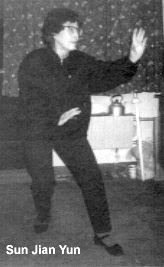
named Yang Lu Chan was accepted as a student in the early part of the Nineteenth century. After mastering the Art, Yang Lu Chan (nicknamed "Yang without enemy" as he was reportedly a peerless fighter) modified the original Chen style and created the Yang style of Tai Ji Quan, the most popular form practiced in the world today. Wu Yu Xiang leaned the Art from Yang Lu Chan and a variation of the original Chen form from Chen Ching Ping (who taught the 'small frame' version of Chen Tai Ji Quan) and created the Wu style. A man named Hao Wei Zhen, learned the Wu style from Wu Yu Xiang's nephew and taught the style to Sun Lu Tang, who in turn created the Sun style (Sun was already an established master of Xing Yi Quan and Ba Gua Zhang when he learned Tai Ji Quan. He combined his knowledge of the other arts when creating his style). Yang Lu Chan had another student, a Manchu named Quan You, who in turned taught the Art to his son, Wu Jian Quan. Wu Jian Quan popularized his variation of the Yang style, which is commonly referred to as the Wu Jian Quan style. In recent times (this century) there have been many other variations and modifications of the Art, but all may be traced back through the above masters to the original Chen family forms.
Complete Tai ji Quan arts include basic exercises, stance keeping (Zhan Zhuang), repetitive single movement training, linked form training, power training (exercises which train the ability to issue energy in a ballistic pulse), weapons training (which includes straight sword, broadsword, staff and spear), technique training and various two person exercises and drills (including "pushhands" sensitivity drills). A hallmark of most styles of Tai Ji Quan is that the movements in the forms are done quite slowly, with one posture flowing into the next without interruption. Some forms (the old Chen forms for example) alternate between slow motion and explosive movements. Other styles divide the training into forms which are done slowly at an even tempo and separate forms which are performed at a more vigorous pace. The goal of moving slowly is to insure correct attention is paid to proper body mechanics and the maintenance of the prerequisite relaxation. Training exercises can be divided into two broad categories: solo exercises, and drills which require a partner.
A beginner will usually begin training with very basic exercises designed to teach proper structural alignment and correct methods of moving the body, shifting the weight, stepping, etc. All of the Tai Ji Quan arts have at their very foundation the necessity of complete physical relaxation and the idea that the intent leads and controls the motion of the body. The student will also be taught various stance keeping postures which serve as basic exercises in alignment and relaxation as well as a kind of mind calming standing meditation.
A basic tenet of all internal martial arts is that correct motion is born of absolute stillness. Once the basics are understood, the student will progress to learning the formal patterns of movement (forms) which contain the specific movement patterns and techniques inherent in the style.
Traditionally, single patterns of movement were learned and repeated over and over until mastered, only then was the next pattern taught. Once the student had mastered an entire sequence of movements individually, the movements were taught in a linked sequence (a 'set'). The goal of training is to cultivate a kind of 'whole body' power. This refers to the ability to generate power with the entire body, making full use of one's whole body mass in every movement. Power is always generated from "the bottom up, meaning the powerful muscles of the legs and hip serve as the seat of power. Using the strength of the relatively weaker arms and upper body is not emphasized. The entire body is held in a state of dynamic relaxation which allows the power of the whole body to flow out of the hands and into the opponent without obstruction. This is described in the Tai Ji Quan Classics as "being rooted in the feet, developed by the legs, directed by the waist transferred through the back and expressed in the hands."The Tai Ji Quan arts have a variety of two person drills and exercises designed to cultivate a high degree of sensitivity in the practitioner. Using brute force or opposing another's power with power directly (double weighting) is strictly discouraged. The goal of two person training is to develop sensitivity to the point that one may avoid the opponent's power and apply one's own whole body power where the opponent is most vulnerable. One must cultivate the ability to 'stick to the opponent, smothering the others' power and destroying their balance.
The ability to "stick, adhere, continue and follow (zhan, nian, lian, sui)" is vital to the application of Tai Ji Quan combat techniques, the majority of which are grappling oriented. Techniques that include pushing, pulling, wrapping, bumping, sweeping, locking, knocking down and throwing (grappling arts) far outnumber striking and kicking techniques. Solo forms training is designed to develop the ability to control oneself; paired practice trains the practitioner to apply the power developed during solo training to another in the most efficient manner.
Modified forms of Tai Ji Quan for health have become popular worldwide in recent times because the benefits of training have been found to be very conducive to calming the mind, relaxing the body, relieving stress, and improving one's health in general. However, it is important to realize that all traditional systems of Tai Ji Quan were originally created for a single purpose, training the practitioner to fight.
Chen Wang Ting's original form of Chen style Tai Ji Quan is often referred to as the "Old Frame" (Lao Jia) and its second form as "Cannon Fist" (Pao Chui). In the latter part of the Eighteenth century, a fifth generation descendant of Chen Wang Ting, Chen You Ben simplified the original forms into sets which have come to be known as the "New Style" (Xin Jia). Chen You Ben's nephew, Chen Ching Ping, created a variation of the New Style which is known as the "Small Frame" (Xiao Jia) or "Zhao Bao" form. All of these styles have survived to the present.
Smooth flowing movements punctuated by explosive strikes and kicks characterize the Old Frame. There are many vigorous movements that involve jumping, spinning while in the air, stamping the feet, and dropping the body low to the ground. Technically, in addition to the explosive strikes and throws, the Chen style contains a great number of Chin Na (joint locking and leverage) techniques. These techniques are a remnant of the original weapons disarms popular on the ancient battlefields, and reflect the warrior background of Chen Wang Ting, creator of the style.
The Yang style of Tai Ji Quan is a variation of the original Chen style. The forms, which were passed down from the Yang style founder, Yang Lu Chan, have undergone many modifications since his time. Yang Lu Chan's sons were very proficient martial artists and each, in turn, modified their father's art. The most commonly seen variation of the form found today comes from the version taught by Yang Lu Chan's grandson, Yang Cheng Fu. It was Yang Cheng Fu who first popularized his family's art and taught it openly. Yang Chen Fu's form is characterized by open and extended postures. Most of the modern variations of the Yang style, as well as the standardized Mainland Chinese versions of Tai Ji Quan are based on his variation of the Yang form.
Yang style Tai Ji Quan is characterized by soft, smooth and flowing movements, which are relatively, even in tempo. The alternations of slow and quick movements that are found in the Chen style sets have been separated in the Yang style. Yang style Tai Ji Quan includes a 'long' or slow set in which all movements flow together at an even pace, and a separate 'fast' form which includes quick and explosive movements. Technically, the Yang styles include a great number of projections and takedowns. The vast majority of Chin Na techniques practiced in the Chen style have been removed from the Yang style.
Yang Lu Chan's student, Wu Yu Xiang combined Yang's form with the Zhao Bao form, which he learned from Chen Ching Ping to create the Wu style. This style features higher stances and compact, circular movements. His nephew's student, Hao Wei Zhen was a famous practitioner of the style, so the style is sometimes referred to as the Hao Style. Hao Wei Zhen taught his style to Sun Lu Tang, who combined his knowledge of Xing Yi Quan and Ba Gua Zhang to create his own Sun style form. Smooth and compact movements characterize Wu style Tai Ji Quan.
Each movement in a form progresses through four stages, Rise, Support, Open and Close. Adept fighters of the Wu style are able to project an opponent with very little overt movement. As stated above, Sun Lu Tang combined the Wu style with elements of Xing Yi Quan and Ba Gua Zhang to create Sun style Tai Ji Quan. In general, Sun style Tai Ji Quan follows the sequence of the Wu style, but the addition of the energies of Xing Yi Quan and Ba Gua Zhang give the form a different flavor. Technically, Sun style Tai Ji Quan has added the evasive body method of Ba Gua Zhang and the more overtly 'martial' techniques of Xing Yi Quan to the original technique base of Wu style Tai Ji Quan.
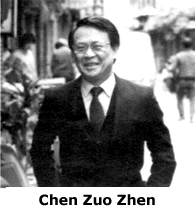 Y
Yang Lu Chan had another famous student named Quan You, who in turn taught the style to his son Wu Jian Quan. This modification of the original Yang style is usually referred to as the Wu Jian Quan style. This form's movements are smaller and the stance is higher than the popular Yang style.
Wu Jian Quan style Tai Ji Quan is close to the Yang style in form and movement. In general, the form is done with relatively smaller stances and a characteristic forward lean of the torso in most of the movements. The Wu Jian Quan style also contains 'slow' and 'fast' sets of forms. The practice of pushing hands is highly developed in this style. It is also interesting to note that many of Wu Jian Quan's original students have lived to very advanced age.
In summary, the major styles of traditional T'ai Chi Ch'uan are the Chen, Yang, Wu, Wu Jian Ch'uan and Sun. All other "styles" are variations of the above. Despite variations in form and technique, the underlying concepts of relaxed, whole body power end the avoidance of using force against force are the foundations of all styles of Tai Ji Quan. True Tai Ji Quan elevates the practice of common martial skills, which primarily rely upon superior strength and speed, to the level of Art. As the Classics say, "The ability to overcome a thousand pounds of pressure with a force of four ounces is not due to superior strength, a man in his eighties who is able to defend himself against multiple attackers is not relying upon superior speed."
Tai Ji Quan is a martial art is based on the principle of the soft overcoming the hard. Direct opposition of another's force is strictly discouraged, and great emphasis is placed upon borrowing the force of the opponent and using it to one's own advantage. Belonging to the schools of the so-called "soft" martial arts, Tai Ji Quan training is designed to cultivate a relaxed, flexible and sensitive body along with a calm and focused intent. The Tai Ji Quan fighter is trained to absorb and neutralize incoming force, join with the opponent by sticking to his center, and issue force at the appropriate time and angle with the power of the entire body. By following the principle of giving up the self and following others, the Tai Ji Quan fighter is able to use an opponent's own strength against him, thereby allowing the weaker and slower to overcome the stronger and faster opponent.
Another hallmark of Tai Ji Quan as a combat art is that it has, as its foundation, the principle of natural movement. All the movements and techniques of the Tai Ji Quan Arts are based upon natural strengths and reactions. Because training is less a matter of conditioning new responses as refining inborn abilities, real fighting ability can be cultivated in the Tai Ji Quan arts faster than most other styles of martial arts. The diligent student of Tai Ji Quan, properly trained, will have acquired real self defense ability in a matter of months, as opposed to the years of training required in many other martial systems.
The primary combat strategy of Tai Ji Quan can be summed up in the phrase "Entice (the opponent) to advance, (cause the opponent to) fall into emptiness, unite (with the opponent) then throw (the opponent) out" [Yin jin, luo kong, he ji chu]. Enticing the opponent to advance (advance refers to the opponent's aggressive forward momentum) can be as simple as standing in front, presenting an open target or launching a preemptive attack designed to draw a reaction. Enticing the opponent into aggressive forward momentum has several advantages. Firstly, just like the arrow released from the bow, a committed attack cannot change direction until its momentum is spent. Such an attack affords the Tai Ji Quan fighter time and opportunity to gain the superior position for effective counter attack. Secondly, a powerful, committed attack almost invariably requires whole body motion. Once the opponent's whole body is in motion (and his center of balance is in flux) it becomes possible to unbalance him with a relatively small force (correctly applied). For example, it requires a relatively large force to foot-sweep an upright and stationary opponent to the ground. However once the opponent moves his center of mass forward as he takes a step, a sweep to the stepping foot just before it touches the ground will send the opponent crashing to the ground with a very slight effort. This type of technique is referred to as "Moving a thousand pounds with a force of four ounces." Finally, enticing an opponent into aggressive forward motion locks his mentality into the attack mode. With committed focus on attacking, the opponent will be slow in changing to the defensive mind set as the Tai Ji Quan fighter counterattacks. The opponent's reaction time is delayed, further increasing the counterattacks odds of success; this allows the Tai Ji Quan fighter to "leave after yet arrive first."
"Falling into emptiness"is analogous to the principle of never using force against force. The Tai Ji Quan Classics state "Some have practiced tens of years but are still defeated by others: this is because they have not recognized their illness of double
What is the method that makes it possible to entice the opponent to enter, cause him to fall into emptiness, unite with him and then throw him out? For that matter, what separates Tai Ji Quan (or the internal/soft style) techniques from all other types of techniques? The answer lies in one underlying skill; namely, the ability to "stick adhere, continue and follow" [Zhan, nien, lian, sui]. Stick and Adhere refer to connecting with the opponent in a soft and nonconfrontational manner and maintaining this connection as you both move (blocking an opponent's incoming force inevitably results in the opponent being knocked away. This makes it impossible to join with the opponent and one is doomed to remaining double weighted). Continue and Follow refer to "giving up oneself and following the other" by continuously following the opponent's movement and changes in order to maintain your connection. In this Situation, you may constantly monitor the opponent's actions and intent while seeking the time and opportunity to join with and lead his center, thereby bringing him under your control.
One may ask, "what exactly are we sticking to and following?" Do we stick to the opponent's arms? His torso? The answer is we stick to the opponent's center of gravity (his pelvic region). In Tai Ji Quan technique this is rarely achieved by direct contact (a useful example to help understand the concept of sticking to and controlling an opponent's center is the wrestler, who routinely sticks to his opponent's center directly, as when applying the popular bear hug). Most often, the Tai Ji Quan fighter will seek to stick to and control the opponent's center through contact with his arms and/or upper torso, using these regions as handles to the opponent's center. In order to maintain control of the opponent’s center, the point of contact with the opponent will often change in the course of an exchange. The ability to stick, follow and control an opponent's center in the midst of motion is cultivated in the various push hands drills found in all styles of Tai Ji Quan.
The Techniques of Tai Ji Quan are primarily grappling oriented. Although practitioners are trained to strike with all parts of the body, purely percussive techniques (strikes designed to cause local tissue damage) are far less common than the grappling oriented techniques which include pushing, pulling, twisting, sweeping, locking, throwing and knocking. Techniques such as these are designed to control the opponent's center and displace him in space.
All Tai Ji Quan techniques are combinations of the energies of the Eight Techniques: ward off, roll back, press, push, pluck, split, elbow and body stroke [peng, lu, ji, an, cai, lie, zhou, kao]. In its broadest sense, ward off energy can he applied to the whole body. It is the energy resulting from proper alignment and relaxation which gives the Tai Ji Quan fighter the elasticity and springiness necessary to fight. In a stricter, technical sense, ward off is the energy which supplies buoyancy and supports weight (as soft and flexible water is able to support a massive ship). Roll back is energy which moves incoming force past one's body toward the rear (as a revolving door gives way and pivots around its center). Press is the force which rebounds from the ground up in a pulse and bounces the opponent away from the body (as a rock bounces off the taught head of a drum). Push is a force which puts pressure downward (like the force used when you lift your body out of a pool by pressing the palms down on the outside deck). Pluck is a sudden, downward jerking force towards the rear of one's own body (like the force used to pluck an apple from a tree). Split is the energy of coupling (force applied in parallel but opposite directions which causes a rotation around their center point); it is the force generated when you turn a steering wheel with both hands on the sides of the wheel. Elbow is whole body ward off power focused through the elbow (think of closing a car door with your elbow when your hands are full). Body stroke is whole body ward off power channeled through some part of the torso, usually the shoulder (think of breaking a door down by leaning into it with your shoulder). All the various techniques of Tai Ji Quan, including throwing, locking, kicking and striking, are combinations of these eight energies.
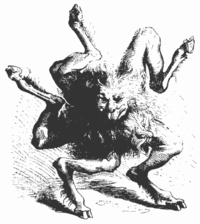

 named Yang Lu Chan was accepted as a student in the early part of the Nineteenth century. After mastering the Art, Yang Lu Chan (nicknamed "Yang without enemy" as he was reportedly a peerless fighter) modified the original Chen style and created the Yang style of Tai Ji Quan, the most popular form practiced in the world today. Wu Yu Xiang leaned the Art from Yang Lu Chan and a variation of the original Chen form from Chen Ching Ping (who taught the 'small frame' version of Chen Tai Ji Quan) and created the Wu style. A man named Hao Wei Zhen, learned the Wu style from Wu Yu Xiang's nephew and taught the style to Sun Lu Tang, who in turn created the Sun style (Sun was already an established master of Xing Yi Quan and Ba Gua Zhang when he learned Tai Ji Quan. He combined his knowledge of the other arts when creating his style). Yang Lu Chan had another student, a Manchu named Quan You, who in turned taught the Art to his son, Wu Jian Quan. Wu Jian Quan popularized his variation of the Yang style, which is commonly referred to as the Wu Jian Quan style. In recent times (this century) there have been many other variations and modifications of the Art, but all may be traced back through the above masters to the original Chen family forms.
named Yang Lu Chan was accepted as a student in the early part of the Nineteenth century. After mastering the Art, Yang Lu Chan (nicknamed "Yang without enemy" as he was reportedly a peerless fighter) modified the original Chen style and created the Yang style of Tai Ji Quan, the most popular form practiced in the world today. Wu Yu Xiang leaned the Art from Yang Lu Chan and a variation of the original Chen form from Chen Ching Ping (who taught the 'small frame' version of Chen Tai Ji Quan) and created the Wu style. A man named Hao Wei Zhen, learned the Wu style from Wu Yu Xiang's nephew and taught the style to Sun Lu Tang, who in turn created the Sun style (Sun was already an established master of Xing Yi Quan and Ba Gua Zhang when he learned Tai Ji Quan. He combined his knowledge of the other arts when creating his style). Yang Lu Chan had another student, a Manchu named Quan You, who in turned taught the Art to his son, Wu Jian Quan. Wu Jian Quan popularized his variation of the Yang style, which is commonly referred to as the Wu Jian Quan style. In recent times (this century) there have been many other variations and modifications of the Art, but all may be traced back through the above masters to the original Chen family forms.
